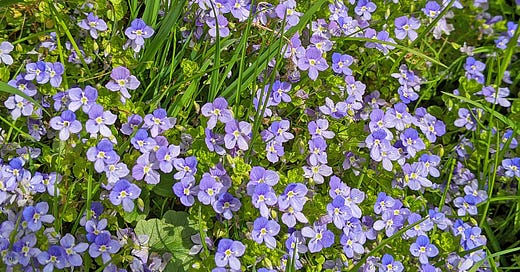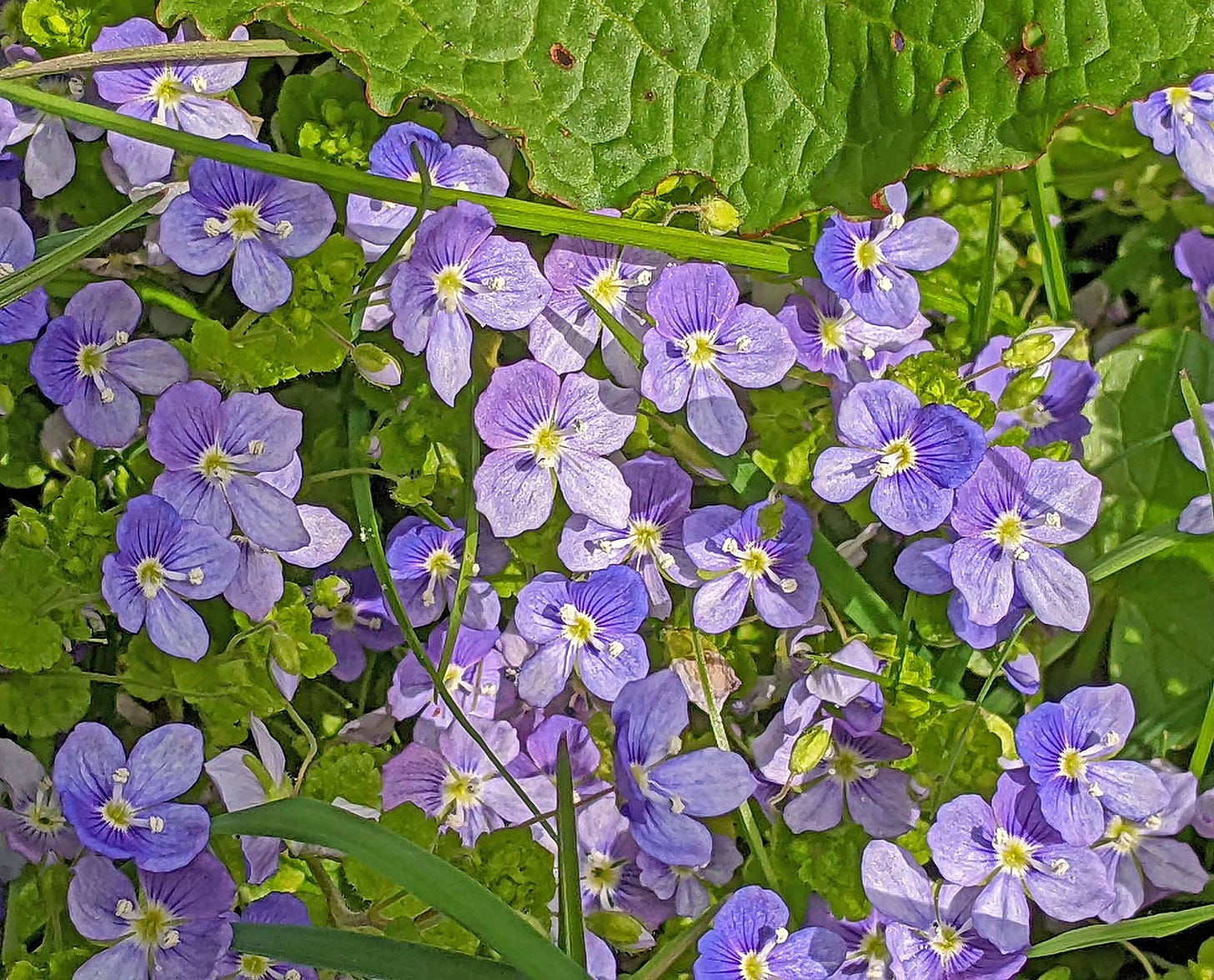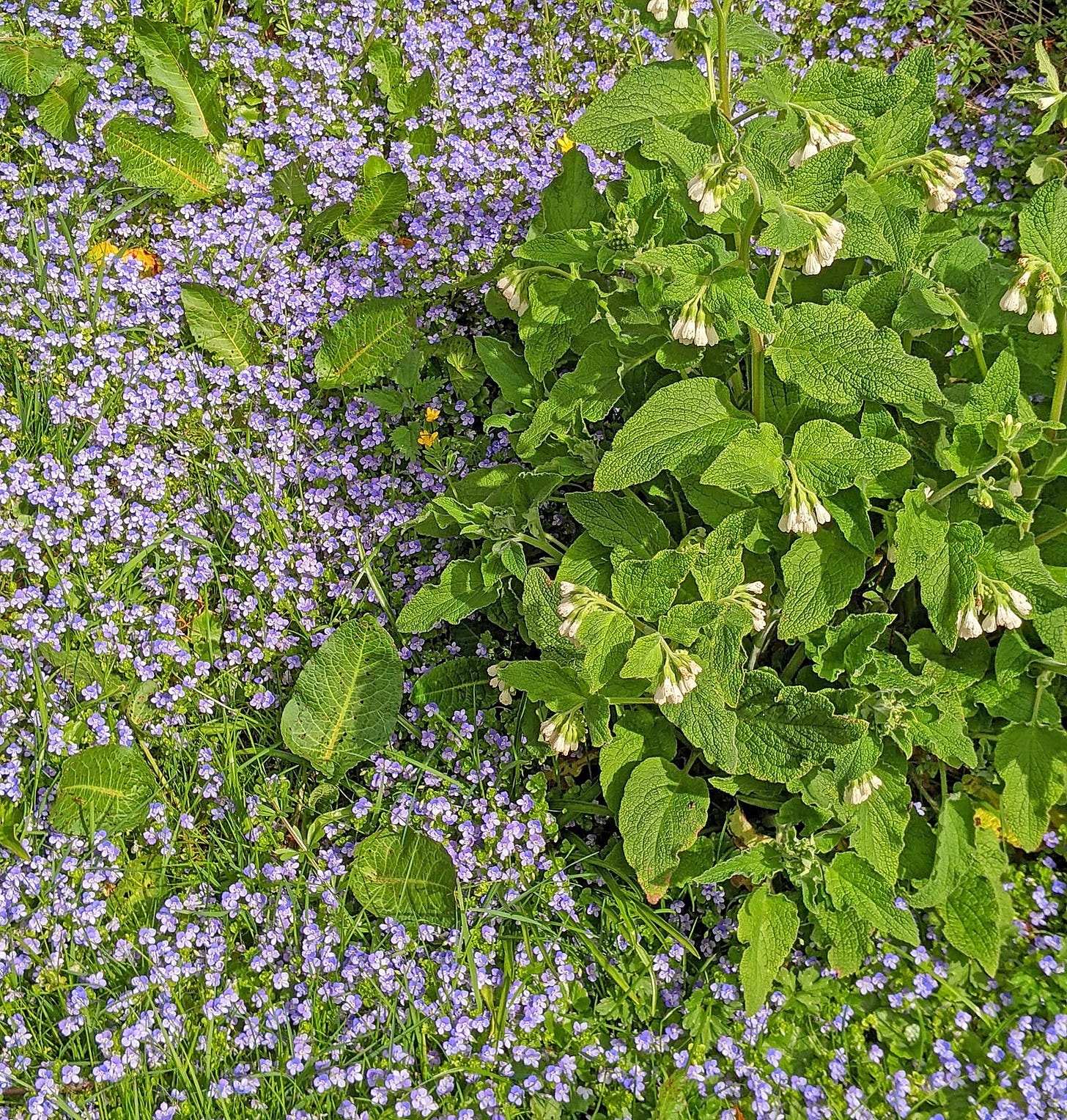Trigger warning! If you are a lawn-lover, a devotee of perfectly mown, uniformly green swards, look away now.
This is slender speedwell Veronica filiformis, a native of Turkey and the Caucasus, that was introduced to British gardens in 1808 and became a favourite plant for Victorian rockery gardeners, but thrives best in mown grass on moisture-retentive soils.
It first hopped over the garden wall in 1838, but didn't really begin its rampage until the late 1920s. It has been on the run ever since, invading lawns everywhere thanks to the wholesale and retail trade in lawn turf and aided by the lawnmower. It’s still spreading. I like it, and so do small insects like hoverflies.
The remarkable thing about this pretty little colonist is that it almost never produces seeds but has spread the length and breadth of the country via vegetative propagation, thanks to its creeping stolons that thread their way through the grass. Once established in lawns, each pass of the mower takes hundreds of cuttings , many of which quickly root. One plant in a frequently mown lawn can soon become a blue carpet.
As with lawn daisies Bellis perennis, it thrives best in short grass, so if you let a lawn grow a bit it will struggle to compete with taller grass. It's our national fetish for frequently-mown lawns, and their establishment from turf that's already infested, rather than growing new lawn from grass seed, that has guaranteed its survival and spread.
This fine patch of sky-blue slender speedwell was growing beside a footpath in Durham city, alongside another non-native that’s thriving here - white comfrey Symphytum orientale, another introduction from Turkey that first arrived in Cambridge in 1752 and was first recorded in the wild in 1849. It flowers early in spring and produces plenty of nectar, so is an asset to our hard-pressed bumblebees. It sets fertile seeds, so can be invasive.







It's lovely - who needs a perfect lawn anyway....
I adore speedwell; in my own backyard we have thyme-leaved speedwell (Veronica serpyllifolia) and bird's eye speedwell (V. perssica)--both, of course, are non-native to Pennsylvania...but they're so lovely, does it matter?